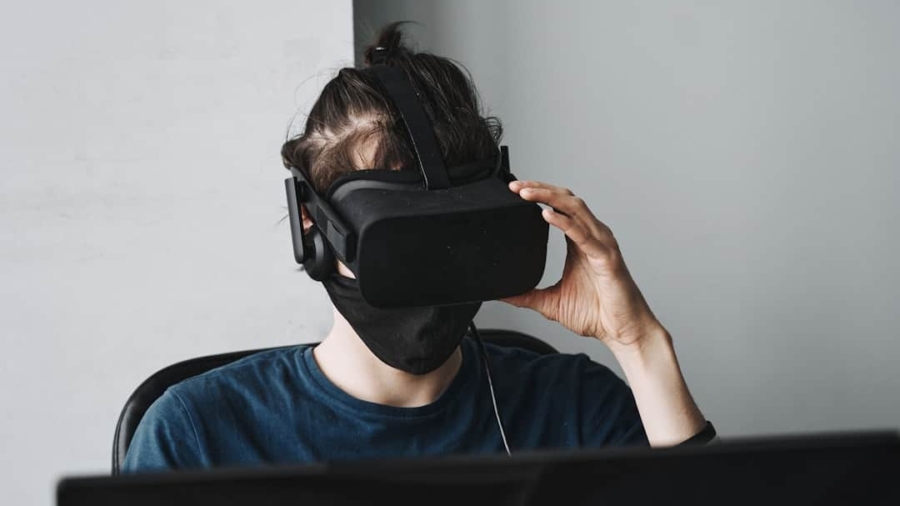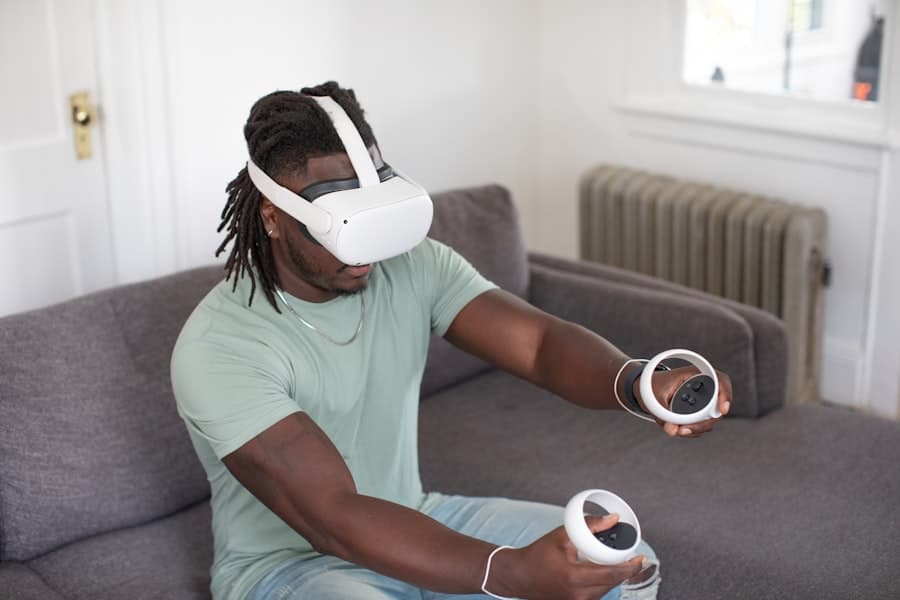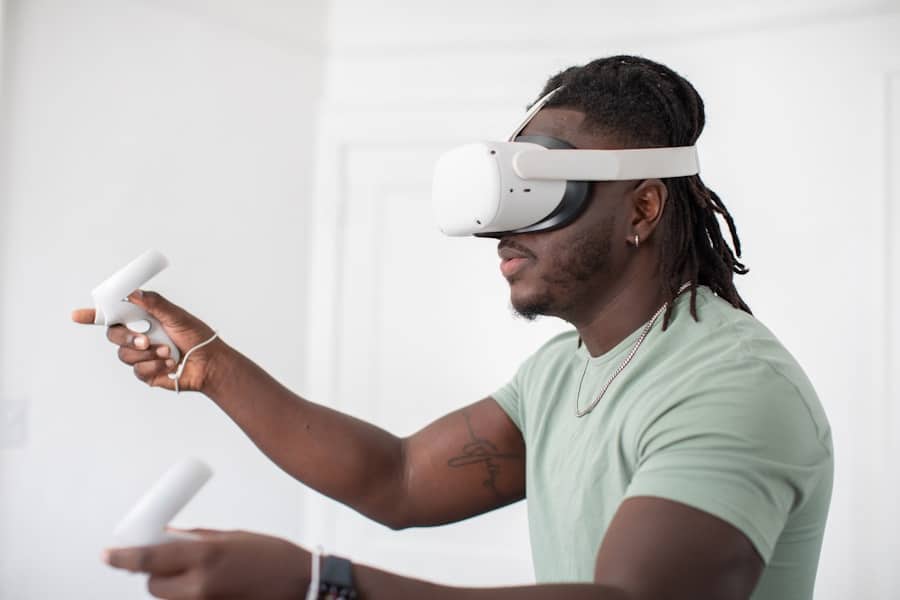Virtual reality (VR) training has emerged as a transformative approach in various fields, particularly in technician education. By immersing learners in a simulated environment, VR provides a unique platform for hands-on experience without the risks associated with real-world training. This technology allows trainees to engage with complex systems and scenarios that they may not have the opportunity to encounter in traditional educational settings.
As industries evolve and the demand for skilled technicians increases, the integration of VR into training programs is becoming more prevalent, offering innovative solutions to age-old challenges in education. The concept of virtual reality is not new; however, its application in training has gained momentum due to advancements in technology and a growing understanding of its pedagogical benefits. VR training environments can replicate intricate machinery, hazardous situations, or even customer interactions, enabling technicians to practice their skills in a safe and controlled setting.
This immersive experience not only enhances engagement but also fosters a deeper understanding of the material, making it an invaluable tool for educators and employers alike.
Key Takeaways
- Virtual reality training provides a simulated environment for technicians to practice and improve their skills in a safe and controlled setting.
- The benefits of virtual reality for technician training include cost-effectiveness, increased engagement, and the ability to practice complex tasks without risk.
- Virtual reality simulations enhance learning by providing realistic scenarios, immediate feedback, and the opportunity for repeated practice.
- Virtual reality plays a crucial role in hands-on training by allowing technicians to interact with equipment and tools in a virtual environment before working with them in real life.
- Virtual reality has a significant impact on the retention and application of knowledge, as it provides a memorable and immersive learning experience.
The Benefits of Virtual Reality for Technician Training
One of the most significant advantages of virtual reality in technician training is its ability to provide realistic simulations that closely mimic real-world scenarios. This realism allows trainees to develop their skills in an environment that reflects the challenges they will face on the job. For instance, a technician learning to repair complex machinery can practice troubleshooting and maintenance procedures in a virtual setting that replicates the actual equipment they will encounter.
This hands-on experience is invaluable, as it prepares them for the nuances of real-life situations without the risk of damaging expensive equipment or endangering safety.
Customizable simulations allow educators to create scenarios that align with the curriculum and the competencies required by employers.
For example, in the field of automotive technology, VR can be used to simulate various vehicle systems, enabling students to diagnose issues and perform repairs on virtual cars. This adaptability not only enhances the learning experience but also ensures that trainees are equipped with the relevant skills needed in their respective fields.
How Virtual Reality Simulations Enhance Learning
Virtual reality simulations enhance learning by engaging multiple senses and providing an interactive experience that traditional methods cannot match. In a VR environment, learners can manipulate objects, navigate through complex systems, and receive immediate feedback on their actions. This interactivity fosters active learning, which has been shown to improve retention and understanding of complex concepts.
For instance, a technician learning about electrical systems can visualize circuit diagrams in three dimensions, allowing them to grasp how components interact in a way that flat images cannot convey. Additionally, VR simulations can incorporate gamification elements, such as challenges and rewards, which further motivate learners. By turning training into an engaging game-like experience, students are more likely to remain focused and invested in their learning journey.
This approach not only makes the training process enjoyable but also encourages healthy competition among peers, driving them to improve their skills continuously. The combination of immersive experiences and gamified elements creates a powerful learning environment that can lead to better outcomes for technicians.
The Role of Virtual Reality in Hands-On Training
Hands-on training is essential for technicians, as it allows them to apply theoretical knowledge in practical situations. Virtual reality serves as an effective bridge between theory and practice by providing a safe space for learners to experiment with their skills. In many technical fields, such as plumbing or electrical work, mistakes can be costly or dangerous.
VR training mitigates these risks by allowing trainees to make errors and learn from them without real-world consequences. For example, a plumbing student can practice installing pipes and fixtures in a virtual environment where they can see the immediate effects of their actions without any physical repercussions. Furthermore, VR can facilitate remote training opportunities, making it accessible to a broader audience.
Technicians in remote locations or those unable to attend traditional classes can benefit from VR training programs that deliver high-quality instruction regardless of geographical constraints. This flexibility not only expands access to education but also allows for continuous learning and skill development throughout a technician’s career. As industries increasingly adopt remote work models, the role of VR in hands-on training will likely become even more critical.
Virtual Reality’s Impact on Retention and Application of Knowledge
The impact of virtual reality on knowledge retention and application is profound. Studies have shown that immersive learning experiences significantly enhance memory retention compared to traditional learning methods. When learners engage with content actively through VR simulations, they are more likely to remember what they have learned and apply it effectively in real-world situations.
This phenomenon can be attributed to the brain’s ability to form stronger neural connections when information is experienced rather than passively received. Moreover, VR training allows for repeated practice in a low-stakes environment, which reinforces learning and builds confidence. Technicians can revisit complex scenarios multiple times until they feel proficient, ensuring that they are well-prepared for actual job tasks.
For instance, a technician learning about HVAC systems can repeatedly practice diagnosing issues in a virtual setting until they master the necessary skills. This iterative process not only solidifies knowledge but also empowers technicians to approach real-world challenges with greater assurance.
The Future of Virtual Reality in Technician Education
As technology continues to advance, the future of virtual reality in technician education looks promising. The integration of artificial intelligence (AI) into VR training programs is one area poised for growth. AI can enhance simulations by adapting scenarios based on individual learner performance, providing personalized feedback and guidance tailored to each trainee’s needs.
This level of customization could revolutionize how technicians are trained, ensuring that every learner receives instruction that aligns with their unique strengths and weaknesses. Additionally, as VR hardware becomes more affordable and accessible, educational institutions are likely to adopt these technologies at an increasing rate. The proliferation of mobile VR devices means that training can occur anywhere—whether in classrooms, workshops, or even at home—making it easier for technicians to engage with their education on their own terms.
Furthermore, as industries recognize the value of VR training in improving workforce readiness and reducing onboarding time, investment in these programs will likely increase, leading to further innovations and enhancements in VR educational tools.
Case Studies of Successful Virtual Reality Training Programs
Several organizations have successfully implemented virtual reality training programs that demonstrate the effectiveness of this approach in technician education. One notable example is Boeing’s use of VR for aircraft assembly training. The aerospace giant has developed immersive simulations that allow technicians to practice assembling complex aircraft components before working on actual planes.
This program has resulted in significant reductions in assembly time and errors, showcasing how VR can enhance efficiency and accuracy in high-stakes environments. Another compelling case study comes from Ford Motor Company, which has integrated VR into its technician training programs for automotive repair. By using virtual simulations to train technicians on vehicle diagnostics and repair procedures, Ford has seen improvements in both employee confidence and customer satisfaction rates.
Trainees are better equipped to handle real-world challenges after completing their VR training modules, leading to faster service times and higher-quality repairs.
Challenges and Limitations of Virtual Reality in Technician Training
Despite its many advantages, virtual reality training is not without challenges and limitations. One significant hurdle is the initial cost associated with developing high-quality VR content and acquiring the necessary hardware. While prices have decreased over time, creating realistic simulations requires substantial investment in both technology and expertise.
Smaller educational institutions or organizations may struggle to allocate resources for such programs, potentially limiting access to this innovative training method. Additionally, there are concerns regarding the potential for motion sickness or discomfort among users during VR experiences. Some individuals may find prolonged use of VR headsets disorienting or physically uncomfortable, which could hinder their ability to engage fully with the training material.
Addressing these issues requires careful design considerations and user testing to ensure that VR training remains accessible and enjoyable for all learners. In conclusion, while virtual reality presents exciting opportunities for technician education, it is essential to navigate its challenges thoughtfully to maximize its potential benefits. As technology continues to evolve and more organizations embrace this innovative approach, the future of technician training looks increasingly bright.
If you are interested in exploring the latest tech products for 2023, you may want to check out




